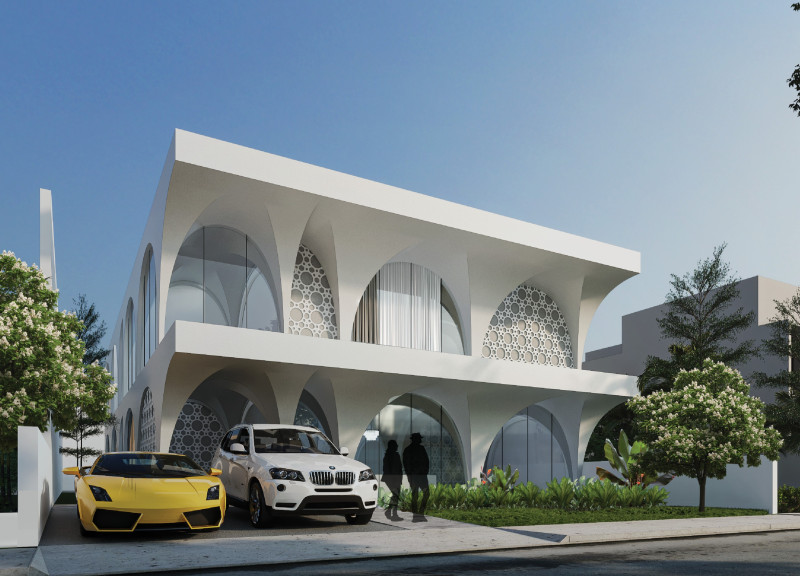5 key facts about this project
At the core of the project is its dual function. It operates as both a public gathering space and an intimate venue for various community activities, including exhibitions, workshops, and social events. This multifunctionality is evident through an open floor plan that encourages flexibility in how the spaces are utilized, allowing the building to adapt to varying uses throughout the day or year. The layout is designed to foster interaction among visitors, with central areas that facilitate movement and engagement, promoting a sense of community within its walls.
The design incorporates a variety of materials that not only affirm the architectural intent but also enhance sustainability. Predominantly, the use of local stone establishes a strong connection with the site, providing a sense of permanence and continuity with the surrounding landscape. Large windows are strategically placed to maximize daylight, reducing the need for artificial lighting and minimizing energy consumption. The inclusion of green roofs and planted terraces not only adds to the building’s aesthetic appeal but also contributes to biodiversity, mitigating urban heat and improving air quality.
Unique design approaches are evident in both the building's aesthetic and its technical execution. The architects have embraced natural light as a central element of their design, creating spaces that are bright and welcoming. The interplay between light and shadow adds dynamism to the environment, making it an integral part of the experience within the building. The orientation of the building has been carefully considered to leverage natural ventilation, enhancing occupant comfort while reducing reliance on mechanical systems.
The project promotes a seamless connection to the surrounding environment, blurring the lines between indoor and outdoor spaces. By incorporating landscaped areas and outdoor gathering spots, the design encourages users to engage with nature, enhancing their overall experience. Pathways thoughtfully integrate with existing topographies, fostering a sense of continuity within the site and inviting exploration of the adjacent landscape.
Another notable aspect of the project is its commitment to inclusivity. The design strategically includes features that cater to a diverse range of users, considering accessibility and mobility within its framework. Through the integration of ramps, wide corridors, and tactile indicators, the space is designed to be navigable for everyone, ensuring that all community members have equal access to its amenities.
As a reflection of modern architectural ideas, this project exemplifies how thoughtful design can create environments that respond to user needs while being considerate of ecological impacts. The careful selection of materials, innovative strategies for natural light utilization, and a commitment to inclusivity all contribute to a well-rounded approach that serves as a model for future developments.
To delve deeper into the intricacies of this architectural endeavor, including detailed architectural plans and sections that illustrate its thoughtful design and functionality, readers are encouraged to explore the full project presentation. Engaging with these elements will provide richer insights into the architectural concepts and ideas that underpin this innovative project.


























